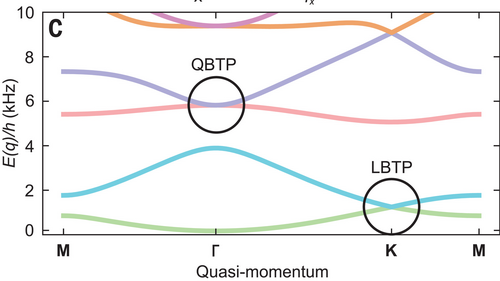
In some quantum mechanical systems, researchers say, the energy landscape is going to have a few “potholes” — touching points where the state of the system is not defined. Understanding how these potholes, known as singularities, affect a quantum system’s behavior is a key area of physics research.
In a new study in the journal Science, incoming Yale assistant professor of physics Charles D. Brown II and his collaborators found a new approach for probing certain types of quantum singularities.
For the study, Brown and co-authors from the University of California-Berkeley conducted a unique quantum simulation experiment with intersecting lasers that trap and manipulate ultra-cold atoms in crystals made of light. The researchers moved the atoms along trajectories that entered, turned, and exited singularities at linear touching points (called Dirac points) and quadratic touching points.
A quadratic band touching point is a point at which two energy bands have equal values — but away from this point the energy values are non-equal, and the gap between the energy bands grows proportional to the square of the distance from the point.
The researchers found that the ultimate state of the system depended only on the entry and exit angles through the singularities.
“We developed a distinct method to probe singularities, importantly including non-Dirac singularities, in ultracold atom quantum simulators,” Brown said.
Brown is first author and co-corresponding author of the study. Dan Stamper-Kurn of the University of California-Berkeley is the senior and co-corresponding author.
This Article has been extracted from the Yale News article of October 10, 2022. For more information, please see the full Yale News article, and the article in Physical Review Research linked below.